Instead of writing a month by month maintenance guide for the winter I thought it would be more useful to discuss some overall Winter Greenkeeping Strategies, so here we are.
Bowling green winter maintenance has long been the poor relation in greenkeeping land as many clubs still insist on putting the green to bed to coin a well worn phrase.
This implies that the green will be left to its own devices over the winter and only returned to when the new season is imminent. I know that nobody really goes away and neglects the green’s needs over winter entirely, but I do see a lot of very useful time being wasted in winter when lots of valuable work could be done on the green.
If you are a reader of Performance Bowling Greens you will know by now that I view the winter as a very important period for green maintenance and preparation for next year.
First thing to mention is that regardless of how intensive it was, the autumn renovation program will not have made up for all of the damage done to the green during a busy bowling season, so a thorough winter maintenance regime is essential to ensure that the green is in good condition next spring.
If your green is going through the renovation phase of the performance greens program this is all the more critical.
Fungicide Withdrawals
 Some time ago, we waved goodbye to amenity turf approval for Carbendazim, a stalwart fungicide that many had come to regard as a worm killer. Others have followed suit. I actually welcome each pesticide ban that comes along for turf as the process can be, and is usually a catalyst for positive change in greenkeeping. Years on…and the world hasn’t quite fallen apart yet without carbendazim!
Some time ago, we waved goodbye to amenity turf approval for Carbendazim, a stalwart fungicide that many had come to regard as a worm killer. Others have followed suit. I actually welcome each pesticide ban that comes along for turf as the process can be, and is usually a catalyst for positive change in greenkeeping. Years on…and the world hasn’t quite fallen apart yet without carbendazim!
The frequent use of pesticides highlights the symptoms driven, reactive nature of much modern greenkeeping practice. Each of these chemicals has been withdrawn due to evidence that they are potentially damaging to human health or soil, or both.
In the Performance Greens Programme I promote a more pro-active approach that focusses on soil health. If we get the health of the soil in order, then the plants can more or less look after themselves. The reality of this for many clubs is that their greens need to go through a transition period to change them from chemical dependent junkies to upstanding, healthy citizens that contribute to the eco-system community in a positive and helpful way.
The withdrawal period is by necessity intensive and can mean that there is more to do than usual, but the aim is to get the soil into a healthy, balanced condition that will naturally promote and support a healthy sward of fine grass that performs to a predictably high standard consistently over the longer term.
This means that the amount of intensive work and indeed expense reduces year on year once the renovation process is underway.
Think about this as an illustration. A healthy sward of fine grass growing in a well balanced, healthy, microbe rich soil will produce all of its own Nitrogen requirements just through the process of thatch degradation by soil organisms. That’s about 50kg/Ha per year of free Nitrogen. Of course, due to our constant removal of clippings, which takes Nitrogen away, we still need to add some as fertiliser, but we can effectively reduce inputs by half, just by maintaining a healthy soil/turf system.
The Importance of Soil Fungi
I might be one of very few greenkeepers who actually welcome fungicide withdrawals, but I do think that in the long term many greenkeepers will see this as a turning point in their practices that led to better green surfaces.
Fungicides kill fungi and the vast majority of soil fungi are beneficial. In fact, we actually don’t know what hidden benefits even the grass pathogenic ones bring to the soil. The only time that pathogens like fusarium become a problem is when we create conditions that favour them. These conditions are already well documented elsewhere on the site and together create a phenomenon I’ve termed the Circle of Decline.
There are important and fascinating messages about soil fungi and the need for a more eco-system orientated focus in the films below. I challenge you to watch them and not come away inspired. Fungicides are very blunt instruments compared to this complexity. Click on the images to watch the films.
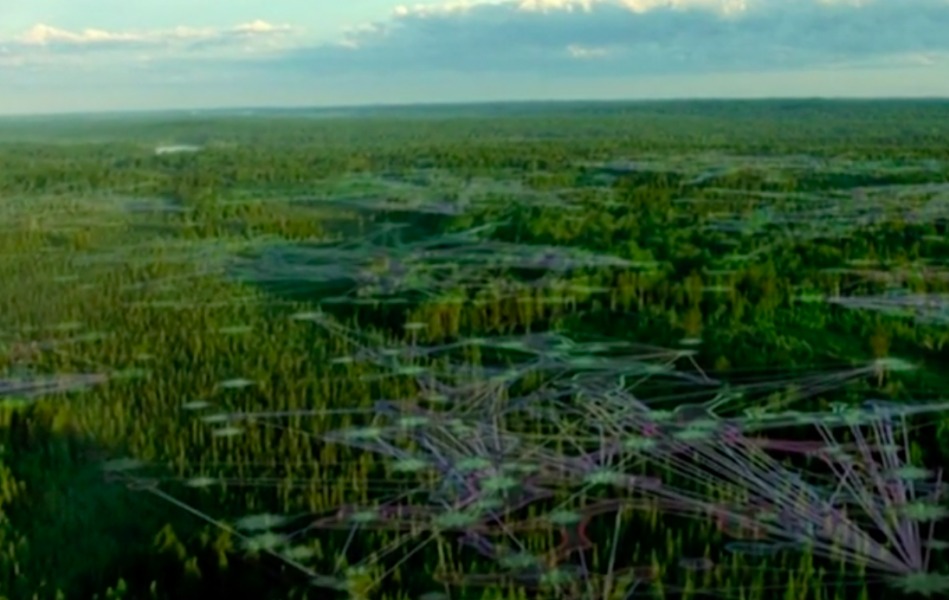

Your soil in balance
When I bandy around flippant sounding terms like balanced soil, I’m talking about the need to determine what kind of state your soil is in and then to work on it to bring it into balance in terms of its Chemical, Physical and Biological condition.
Soil chemistry should be the starting point and a thorough soil analysis is the quickest and easiest way to determine what you have to do here. To bring your soil into line chemically means ensuring that there is sufficient Calcium in the soil to maintain close to the ideal base saturation of cations. Cation Exchange Capacity (CEC) determines how well your soil can hold onto and deliver nutrients to the grass plants. CEC is typically very low in sandy soils like bowling green rootzones. This is because they are low in clay and organic matter (humus), the two soil components largely responsible for Cation Exchange capacity.
The base saturation of cations also dictates the pH of your soil, another important aspect of soil chemistry.
We know that the fine, perennial grasses we seek to encourage in our greens like very sandy soils. When we come to realise that the sand content of the soil can affect its nutritional value, it becomes important to quantify how sandy we really need it to be. The answer is very sandy indeed, but it is possible to go overboard on this and many many greens have already. Peak Sand, is my term to describe the point at which very sandy becomes too sandy and we can determine how your green measures up with a simple Peak Sand test, which is included in the basic soil analysis service.
When the soil’s chemical and physical condition is out of kilter, then its Biology will usually be out of balance too. Signs that this is the case is a general, sickly yellow look to your turf in winter, annual meadow grass dominance, frequent disease outbreaks, fairy rings, localised dry patch, slime etc. Essentially all of the usual suspects we’ve come to know as the circle of decline.
More on the terms used above here.
Plant hardiness and Potassium (K)
Making sure that your grass plants are prepared for winter will help your green to get through the darker months in much better condition than it would if simply left alone to cope.
Potassium (K) is easily leached from sandy soils and is needed by the plants for winter hardiness against cold and disease. Potassium activates the enzymes used in protein, sugar, and starch synthesis, so is vital to many plant processes. The correct amount of plant Potassium improves drought tolerance, cold hardiness and disease resistance. Potassium ions are highly soluble and leach easily from soils so frequent application is often required. The ratio of Potassium to Magnesium when measured in ppm should be about 1.5 – 2:1.
Cultural Practices and Just Being There
I am often asked “what is the most vital winter operation to maintain a healthy green?”
The answer is easy: Just being there is the most important job. When greens are put to bed and ignored all winter, they usually suffer many times more pain than those that are regularly inspected and maintained through the winter.
Aeration: the most beneficial winter job is the regular deep slit tining with a Sisis Autoslit or similar machine. The effect of this operation is cumulative, so once isn’t enough. Twice a month or even weekly passes with this machine aren’t too much given the right conditions. It should be avoided when the green is very wet or if there is frost, but any other time you can get it done, just do it. This operation slowly relieves the compaction that builds up in the soil all summer. The action of the long, knife shaped tines, breaks up compaction in a volume of soil completely disproportionate to the tiny slit it leaves on the surface. Deep slit tining should be done as often as you can manage it from closing day until mid March (stop earlier if very dry conditions prevail).
Remove Dew/Debris: Dew left on the leaf will encourage disease outbreaks in winter, so it’s advisable to switch or brush it off on a daily basis. At the same time you can remove any debris such as leaves and twigs. Keeping the surface free of debris and excessive moisture will also help to minimise worm casting problems.
Mow the Green at 8mm: Allowing the grass to grow on in winter as a means of helping it to recover is a flawed strategy. Longer growth will result in lush, soft leaf tissue which is more susceptible to disease attacks. Fungal pathogens such as fusarium are also encouraged by the slightly milder microclimate at the surface created by longer grass leaves. In most of the UK the grass will not become truly dormant in winter, so keep an eye on growth and mow the green as often as required to keep it down to 8mm, following the usual rule of not removing more than a third of the leaf at any one time. This means it really shouldn’t be allowed to get much beyond 12mm before mowing.
In winter, it is even more critical that the mower is sharp and that it is set properly with zero contact between blade and cylinder.
Worms/wetting agent
Casting worms are a pain and since carbendazim was withdrawn, there is no legal chemical for killing them. Not that you want to kill worms anyway as they provide a fabulous aeration service to your soil and are key detritivores in the early part of the endless recycling process which turns organic material into stable humus. The process is critical for Nitrogen release to the plants and to maintaining an acceptable Cation Exchange Capacity in sandy soils.
Of the many species of earthworms we encounter in the UK, only 3 of them produce surface casts, so it is worthwhile to try to follow a strategy for dealing with them that recognises this fact and doesn’t include all out warfare on all worms.
Winter survival materials
Downcast
Downcast (10 L) — a non-pesticidal liquid that cuts surface worm casts on fine turf while encouraging worms to work deeper in the profile, protecting playing quality without compromising soil health. Expect visible improvement in 2–3 days. Best used September–March as part of a natural, microbe-friendly programme. Typical rates: 20 L/ha to start, then 10 L/ha every ~14 days (shorten the interval on sand-based greens or in very wet spells). Result: cleaner, truer winter surfaces with less smear, fewer re-sweeps, and better presentation.
Protector
PROTECTOR is a concentrated extract of Ascophyllum nodosum seaweed harvested from the Atlantic Ocean from renewable resources, with complexed Iron and Copper.
It contains a natural balance of macronutrients and chelated micronutrients (>60 elements), carbohydrates, amino acids, antioxidants and other beneficial organic compounds.
Copper stimulates enzymatic processes and chlorophyll production within the plant. Copper assists in root growth and physical and chemical plant defence mechanisms,. Copper activation is dependent upon microbial activity in soil organic matter.
Iron is an important component of plant enzymes and proteins involved in respiration, nitrogen metabolism, and chlorophyll synthesis. Protector will harden grass against disease and enhance colour.
- Turf Hardener and autumn/winter biostimulant
- Promotes stress-resistant, healthy plants
- Hardens the grass against wear and enhances disease resistance
- Reduces the need for inorganic fertilisers
- Used in times of stress to re-balance the trace elements within the plant
Hume Pro 3-0-22 Autumn/Winter
Hume Pro 3-0-22 Autumn/Winter+ 4MgO + 3Fe + 6CaO + seaweed+ Humates+ Myco. Recommended for application after Autumn renovation and as a Mid-Winter Potassium Booster for disease, cold and wet stress protection.
Hume Pro is a multi-pass organo-mineral fertiliser designed to increase plant health, soil health and turf management efficiencies. The product has been formulated to avoid the strong smells normally associated with organo-mineral fertilisers. It breaks down rapidly to ensure efficient uptake into the soil and plants whilst having no effect on cutting days.
Hume Pro is rich in Leonardite humic substances and contains both humic and fulvic acids.
This increases the CEC of root zones which increases the efficiencies of further fertiliser applications as a greater quantity of nutrients are retained.
Hume Pro also provides an array of beneficial microbes including Mycorrhizal fungi, Trichoderma fungi and a multitude of different beneficial bacteria, to greatly improves soil health and nutrient uptake efficiencies
Phosphite (5-28-8) with Seaweed + Humic & Fulvic Acids
Phosphite delivers a unique 5-28-8 analysis, supplying phosphorus as both phosphate and phosphite. The phosphate fraction feeds growth processes directly—especially root development and energy storage—while the phosphite fraction primes the plant’s own defence responses to help turf perform through stress (dry spells, cool snaps, and general seasonal pressure). A tailored blend of seaweed plus humic & fulvic acids improves foliar uptake and nutrient efficiency.
What’s inside
- Phosphate (metabolisable P): supports strong rooting and energy (ATP) for growth and recovery.
- Phosphite (reduced P): acts as a plant defence elicitor, helping turf respond to abiotic and seasonal stresses.
- Seaweed: natural source of secondary and micronutrients including B, Ca, Cu, Fe, Mg, Mn, Mo, S, Zn.
- Humic & fulvic acids: aid nutrient chelation and transport, supporting rooting and resilience.
Key benefits for fine turf
- Rooting & establishment: phosphate drives dense, healthy root systems.
- Energy & recovery: phosphorus supports ATP formation for sustained performance.
- Stress readiness: phosphite primes natural defence pathways during challenging periods.
- Efficient uptake: seaweed + humics/fulvics assist foliar absorption and translocation.
Soil Chemistry and Peak Sand Analysis
Get to the bottom of all your green problems and come out fighting
Questions
As always, if you have any questions please feel free to drop me a line.



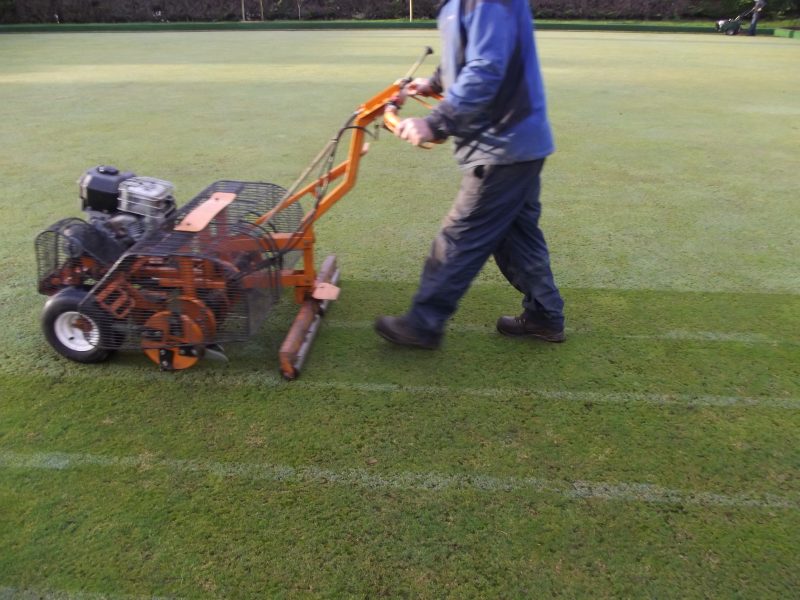
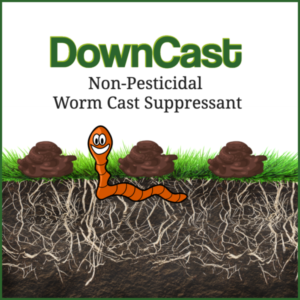


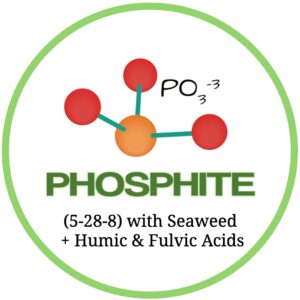

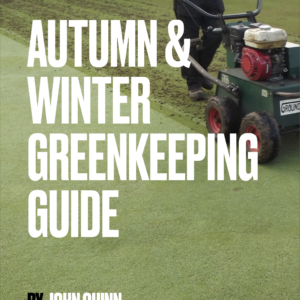
John
We are just about to finish our first regime of compost tea. About twelve applications throughout spring and summer. We also included the nutrients and molasses you recommended.
We have also been using seavolution which we intend to replace with the liquid seaweed you recommend. We have also used other products which we would like to update with a more natural approach. These are as follows:-
Go green liquid(complexed liquid iron with potash),
E2 Pro Long – slow release nitrogen,
Aqua Zorb 45 – wetting agent,
Ferromel 20 – moss control.
Your comments or alternatives to these would be appreciated.
Regards
John W.
Hi,
Please could you explain how Angus Downcast actually works to suppress worms.
Thanks
Downcast works to reduce the pH of the top few inches of the soil which irritates worms and encourages them away from the surface. It includes a nutritional package as a secondary benefit to boost sward health and reduce biotic and abiotic stress.